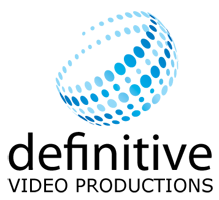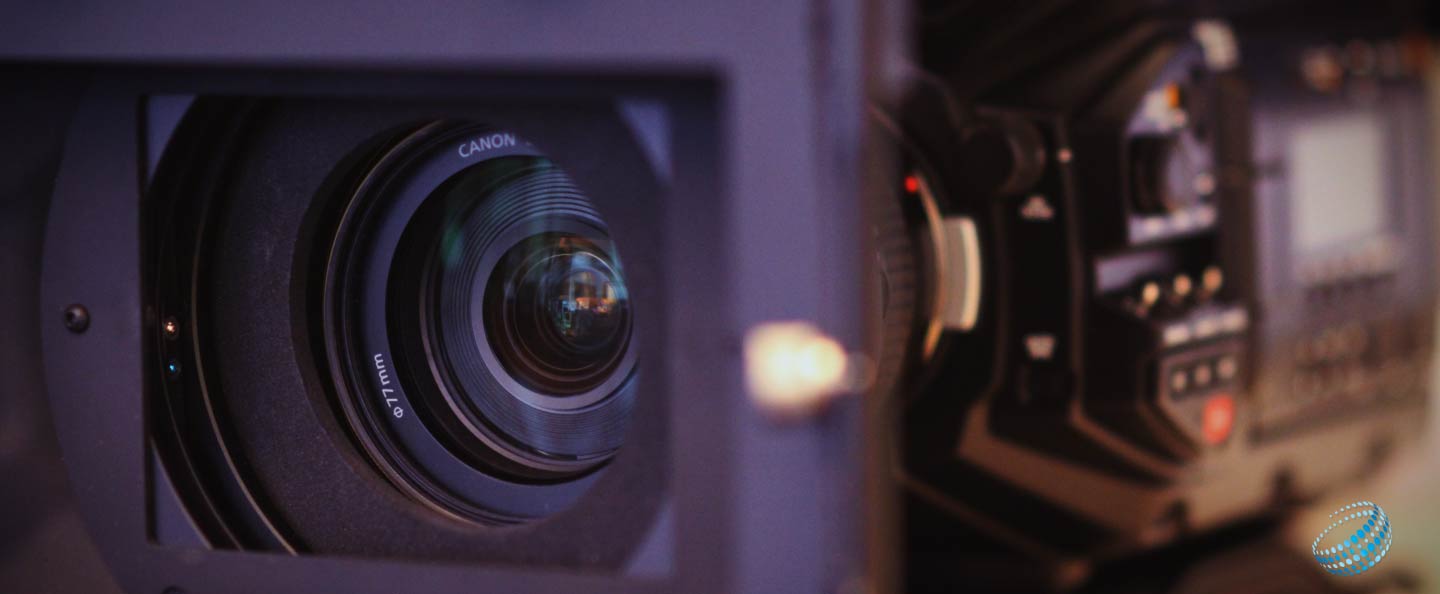- Actualities
Footage where the cameraman picks up shots as an event happens, there’s no directing action, he selectively records what he sees. This type of footage is usually for use in a documentary type programme.
- Acquisition
The initial filming, usually on location
- After Effects
Adobe motion graphics software
- Ambient
Incidental sound recorded at a shooting location
- Aspect ratio
This is the shape of the video picture, either 16:9 (widescreen) or 4:3 (old television shape).
- Autocue
This a trade name of a tele-prompt system where a the script is projected onto a glass plate in front of the camera lens. The speaker can read the script whilst appearing to be looking into the lens and so addressing the viewer
- Avid
Broadcast edit system
- Best boy
Everyone wants to know what a Best boy and a Gaffer are: well a best boy is the assistant to the Gaffer
- BITC
Burn In Timecode. This is the time encoded into video footage displayed numerically in picture. So you see a black box at the bottom of the frame with hours, minutes, seconds and frame numbers shown
- Blu-ray
The Sony system for playing High Definition programmes from DVD type discs
- Blonde
A 2 kilowatt lamp, a bit bright for most purposes these days.
- Brief
A document that explains what a client wants a programme to communicate, who the audience are, where the programme is to be used and the timescales involved.
- Cable basher
On a multi-camera shoot, each camera is joined to the OB truck by a long cable carrying power, signal and communications. For hand held cameras which need to move around to pick up shots it’s common to have an extra member of the crew to move the cable behind them so that they’re not hindered in their movement. This person is the cable basher
- Camera moves
A pan is movement left to right, tilt: up and down, zoom: in and out on the lens. Then there is a tracking shot where the camera itself moves perhaps along a track.
- Chroma-key
This is where a blue or green screen is used behind a subject during shooting. In the edit the coloured background can be removed and replaced with other footage so that the subject appears to be in a different location or in front of something else.
- Close up or tight shot.
A shot showing head and shoulders or closer.
- Compositing
The layering of different video and graphics elements within the frame
- Cutaway
An incidental shot used to cover an edit. Cutaways are usually shot along with an interview and used to hide the visual jumps created when an interview is edited.
- Digitising
This is transfer of footage from camera tape into the computer edit suite. Most cameras now record onto SD cards or internal drives, where the data is simply copied rather than digitised.
- Director
The person giving instruction to as to how a scene is to be shot, instructing actors and choosing shots in a multi-camera live recording.
- Dolly
This is a wheeled platform or a set of wheels under a tripod to move the camera in tracking shots, perhaps on a dolly track
- Dolly grip
The guy who pushes the dolly
- Duplication
Copying a DVD using a computer drive based system where the data is copied from one disc to another, this is the method used for runs of under 1000 discs and it’s a different process to DVD replication
- DVD
Digital Versatile Disc.
- DVD Authoring
Creating a finished playable DVD with menus and possibly subtitles and different interactive playing modes.
- ENG
Electronic News Gathering. This is a term relating to television news but it generally means shooting events as they happen with a single camera, usually hand-held rather than on a tripod.
- Filming
Film really refers to the film industry which is a completely different arena. But we don’t have a better word to use for the act of recording, we can say recording or shooting but filming has stuck.
- Final Cut
Mac professional editing system
- Gaffer
This is a film term. Chief Electrician, which generally means lighting. The Gaffer will rig the lighting that the LD has designed.
- Green screen
The background used for chroma-key where the background of a shot is removed and replaced with alternative footage.
- Grip
This is a crew member who generally helps move equipment and aids the shooting process. The Key Grip is the chief grip.
- High definition or HD
is a picture resolution much greater than normal television. HD pictures are made up of 720 or 1080 horizontal lines as opposed to the 576 of standard definition television.
- HMI
Big lights for big scenes!
- Jib
Crane arm for wide moving sweeping shots
- Kit or gear
Everything we bring with us on a shoot, and yes we do need it all!
- LD
Is a lighting designer
- Letterbox
This is where a widescreen picture is displayed in 4:3 aspect ratio
- Library music
or Production music. Off the shelf music written specifically for general use in Television and video production. Music is selected for programmes and a copyright fee is paid according to its use.
- Lighting Cameraman
A cameraman with the skills to light a scene.
- Long shot
This usually means a shot from distance with the lens zoomed in to the subject
- Media
Any video or audio file
- Mid shot
A shot of a person from around the waist up
- Motion graphics
Animated footage usually produced in Adobe After Effects or Apple’s Motion software. Motion graphics is often a combination of video footage and moving graphic elements, as you might see in a TV title sequence.
- Multi-camera
see O.B.
- Noddies
Shots filmed after a single camera interview of the interviewer nodding and smiling etc. Here we might also record all the questions that were asked in the interview. The noddy shots are then used to cover jump cuts where the interviewee has been edited, so the viewer sees someone answering a question and the interviewer nodding and smiling as they listen to the reply.
- Non-linear editing
Computer based digital editing rather than tape to tape analogue editing.
- O.B.
Outside broadcast, this is a television term for a multi-camera recording or live broadcast from somewhere other than the TV studio. It’s now used more generally for any multi-camera recording where the cameras are mixed live on location.
- Off-line edit
This is the basic edit where we’re simply putting in all the content, without graphics and music and before tidying it up. In the old days there would actually be separate off-line and on-line edit suites, the off-line suite being a couple of tape machines with a controller and the on-line suite being the expensive fully equipped suite.
- On-line edit
This is the full version of the edit with all the graphics music and effects.
- Pan & Scan
This is a telecine term. It’s how widescreen films used to be shown on old television screens. The picture would be zoomed into and different areas of the frame shown according to the content of each shot. Nowadays it just means the widescreen image is zoomed into to fill a 4:3 ratio frame.
- Piece to camera
A single person looking into the lens addressing the viewer. Usually a mid shot
- PPU
Portable production unit, This is all the equipment required for a multi-camera recording installed into wheeled flight-cases, making it easily portable and quick to rig. And of course this can be assembled indoors where an OB truck can’t go.
- Premiere
Adobe professional edit system
- Producer
The person responsible for arranging everything that goes into a production.
- Redhead
A 1 kilowatt lamp
- Replication
This is the mass copying of DVDs using a system where a glass master presses the information into each copy, This is used for large runs of more than 1000 copies
- Rifle mic or gun mic
A long directional microphone that might be used on a boom or hand held and pointed like a gun
- Rushes
This means camera footage. An old film term where freshly shot film was quickly processed while filming continued.
- Shooting script
This is a version of the script with a column of notes showing what video footage is needed to be filmed to go with the script.
- SD
Standard Definition television, as opposed to ‘SD cards’ which more likely contain high definition footage
- Set-up
A configuration of a location for a specific set of shots. A single location might have a couple of set-ups where equipment will need to be rearranged.
- SFX
Sound effects
- Shooting
Recording video or filming
- Storyboard
A series of quickly sketched drawings that describe a scene to be filmed or a complete programme. This is also often the term used for a shooting script.
- Strike
That’s it finished at a location
- Talking head
Footage of an interviewee speaking, or presenter talking to camera, usually a mid shot.
- Timecode
The time encoded onto each frame as it is recorded in the camera. This information is then used in the edit
- Tele-prompt
This is a system where a the script is projected onto a glass plate in front of the camera lens. The speaker can read the script whilst appearing to be looking into the lens and so addressing the viewer
- Treatment
A document compiled by the production company explaining how they intend to produce a programme.
- VHS
Video Home System, developed by JVC, now an obsolete format
- Vision mixing
Selecting shots live in a multi-camera recording
- Voice-over
The recorded voice of a narrator
- vox pops
Recording members of the public as they’re asked their opinion on a topic
- VT
Video tape,
- post
Post production.
- post production
This is all that’s involved in making a programme after filming has taken place.
- Wide shot
A shot with a zoomed out lens such as a big landscape shot, or a shot showing a person from head to foot.
- 1080p and 1080i
Full High Definition resolutions, (progressive or interlaced frames)
- 3 point lighting
Lighting with a key light, fill and back light


